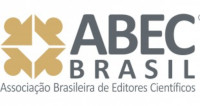Authors Guideline
All authors must have made a significant contribution to the research. RBP endorses the CRediT taxonomy of contributor roles, and for the "Author contributions" section, the following roles will be required: Conceptualization; Methodology; Research; Writing – Original Draft; Writing – Proofreading and Editing; Acquisition of financing; Resources; and Supervision. Contributions from anyone who does not meet the authorship criteria should be listed, with the contributor's permission, in the "Acknowledgments" section (e.g., to recognize people who provided technical help, data collection, written assistance, or a department director who provided general support). Before submitting the article, all authors must agree on the order in which their names will be listed in the manuscript.
RBP accepts submissions in English (preferably), Portuguese and Spanish. Manuscripts must be submitted via https://revbraspsicodrama.org.br/rbp/about/submissionsand be in accordance with the journal's standards, based on the publication manual of the American Psychological Association (APA), 7th edition, 2020.
If the authors opt for the double-blind peer review system, it is up to them to ensure that there are no elements capable of identifying them in any part of the article. The authors' data must be informed in a specific field of the system, during the registration process.
Steps for electronic submission
When starting the electronic submission process, the author must register in the system to submit the manuscript, as well as for the monitoring of the editorial process. The editorial process of the manuscripts will only begin with the completion of the submission of all the necessary information and with the registration of all authors and their complete data. The insertion or removal of authors after the manuscript has been submitted will not be allowed. The authors will be informed, through the registered e-mail, about the receipt of the manuscript.
Step 1: Author(s)’ Registration
At the beginning of the electronic submission process, the following information should be recorded:
All authors must be identified with name, ORCID, e-mail, institutional affiliation (name of the institutions in full, with three instances—for example: University/College/Department), city, state and country. The corresponding author must be identified;
Manuscript title in Portuguese, English and Spanish;
Abstract in Portuguese, English and Spanish;
Keywords in Portuguese, English and Spanish.
Step 2: Formal Manuscript Submission
The manuscript submitted to RBP must be original and unpublished, i.e., not have been published in another media outlet (journal, book, etc.) nor be simultaneously submitted or published elsewhere. Except in the following cases:
The manuscript was deposited on a preprint platform, and it is mandatory to inform the URL of the article and whether the opening of identities is authorized to enable open review;
The article was presented in scientific activities of the Federação Brasileira de Psicodrama (Febrap) and its affiliates, or of scientific institutions linked to the areas of mental, educational and organizational health. In the latter case, a footnote should be inserted on the first page of the manuscript with information about where it was presented.
The opinions expressed in the papers, as well as the accuracy and adequacy of the references, are the sole responsibility of the authors. At the time of submission, the authors must declare conflicts of interest in conducting and/or communicating the research, if any.
A copy of the opinion of the Research Ethics Committee, when relevant, should be sent at the time of submission of the manuscript. Without this document, in cases where they are needed, the editorial process will not be initiated.
Types of Manuscript
Manuscripts of the following types will be accepted for evaluation purposes, and must be informed upon submission:
Original Article: High-quality reports of original research, based on systematic and thorough investigations. Manuscripts may not exceed the length of 50,000 characters with spaces, including: title, abstract, keywords (in the three languages), appendices and references;
Review Article: A critical and timely review of a comprehensive body of research on subjects of interest to the development of psychodrama. Manuscripts may not exceed the length of 50,000 characters with spaces, including: title, abstract, keywords (in all three languages), appendices and references.
Experience Report: Manuscript with a complete and succinct description of professional experience, of social and scientific relevance and with results, even if partial. It should deal with a precise theme and/or concept to be deepened (not only the description of a situation experienced), in addition to making clear: the description of the appropriate methodological principles, description of intervention strategies, theory-practice relationship, considerations about the practice carried out. It should have a maximum of 20 thousand characters with spaces, including title, abstract, keywords (in all three languages), attachments, and references.
Book Review: Presentation and critical analysis of books relevant to psychodrama and related areas, national or foreign, regularly published in the publishing market in the last two years. Its objective is to inform the reader about the narrative construction of the book, such as: characteristics of the work, central aspects and possibilities and contributions to the psychodramatic field. No abstract and keywords required: maximum of 16,000 characters with spaces.
Editorial: At the invitation of the editors-in-chief, texts of relevance to the psychodramatic community will be published. No abstract and keywords required: maximum of 16,000 characters with spaces.
Manuscript Structure
Whenever possible, manuscripts should have the following subsections, differentiated in the text by different styles.
Title: Must be informed in Portuguese, English and Spanish (no more than 12 words) and must not contain abbreviations;
Abstracts in Portuguese, English and Spanish: A paragraph with no more than 120 words;
Keywords: Up to four descriptors, separated by period, presented in Portuguese, English and Spanish, according to the Health Sciences Descriptors (DeCS) should be included. Keywords should be chosen with adequate precision for ranking purposes, allowing the article to be retrieved along with similar works;
Text Body: It must comply with the structure required for each type of work, using italicization for words or expressions that should be emphasized in the text, for instance, foreignisms, such as locusetc., and words that you wish to underline. The citation of the works consulted must be indicated in the text by the author-date system. The author's surname should be written with only the first letter capitalized, both in the body of the text and in parentheses: "Damásio (1975)" or "(Damásio, 1975)". All studies cited in the text should be listed in the references section;
Appendices: They should be avoided and only included if they contain information considered indispensable, such as unpublished tests or descriptions of complex equipment or materials;
Footnotes: They should be avoided whenever possible. However, if there is no other possibility, they must be indicated by Arabic numerals in the text and presented on the same page to which their numerical references refer;
Tables: They should be prepared in Word (.doc) or Excel. In the case of graphical presentations of tables, columns should preferably be used, avoiding other forms of presentation, such as pie, etc.;
Figures: It must be JPG file type, with 300 dpi resolution;
References: The Revista Brasileira de Psicodrama seeks to meet current criteria for scientific publication. Thus, the reference list should be mostly composed of publications of peer-reviewed scientific articles published in the last five years. The ideal composition of the reference list is 60% in citations of scientific articles and 40% other literature, published in the last five years. References should be cited in alphabetical order by authors' last name. The italic typographic feature is used to highlight the title element of the publication and must be uniform across all references in the same document. It is mandatory to search for and insert the DOI in each reference cited. For up to seven authors, write the authors' last names and initials separated by commas. If the number of authors is eight or more, cite the names of the first six, insert three dots, and add the name of the last author.
E.g.: Gilbert, D. G., McClernon, J. F., Rabinovich, N. E., Sugai, C., Plath, L. C., Asgaard, G., … Botros, N. (2004). Effects of quitting smoking on EEG activation and attention last for more than 31 days and are more severe with stress, dependence, DRD2 A1, allele, and depressive traits. Nicotine and Tobacco Research, 6(2), 249-267. https://doi.org/10.1080/14622200410001676305
The following are examples of the most common reference cases. For missing cases, see the American Psychological Association (APA) Publication Manual, 7th edition, 2020.
Journal articles:
Example: Almeida, V. M. C., & Düsenberg, N. B. (2014). Envolvimento do consumidor com o produto: comparação das escalas PII e NIP no contexto brasileiro. Revista Brasileira de Gestão de Negócios, 16(50), 75-95. https://doi.org/10.7819/rbgn.v16i50.959
Book:
Example: Ornelas, M. M. G. (2000). Perícia contábil (3rd ed.). Atlas.
Complete book with editors:
Example: Grinberg, K., & Salles, R. (Eds.). (2009). O Brasil imperial. Civilização Brasileira.
Book with institutional author:
Example: Organisation for Economic Co-Operation and Development (2005). Improving financial literacy: Analysis of issues and policies. Organisation for Economic Co-Operation and Development.
Book with two authors:
Example: Alhashim, D. D., & Arpan, J. S. (1992). International dimensions of accounting (3rd ed.). PWS Kent.
Book with three to seven authors:
Example: Ford, E. W., Duncan, W. J., Bedeian, A. G., Ginter, P. M., Rousculp, M. D., & Adams, A. M. (2003). Mitigating risks, visible hands, inevitable disasters, and soft variables: Management research that matters to managers. Academy of Management Executive, 19(4), 46-60. https://doi.org/10.5465/ame.2005.19417905
Book with more than seven authors:
Example: Gilbert, D. G., McClernon, J. F., Rabinovich, N. E., Sugai, C., Plath, L. C., Asgaard, G., … Botros, N. (2004). Effects of quitting smoking on EEG activation and attention last for more than 31 days and are more severe with stress, dependence, DRD2 A1, allele, and depressive traits. Nicotine and Tobacco Research, 6(2), 249-267. https://doi.org/10.1080/14622200410001676305
E-book:
Example: Lawrence, P. R. (2001). Changing of organizational behavior patterns. Transaction Publishers. Retrieved from http://search.epnet.com/direct.asp?an=7511860&db=buh
Book chapter:
Example: Martone, C. L. (2000). Modelo básico para economia fechada e aberta. In L. M. Lopes, & M. A. S. Vasconcellos (Eds.), Manual de macroeconomia: Nível básico e nível intermediário (2nd ed., pp. 299-311). Atlas.
Dissertations and theses:
Example: Langrafe, T. F. (2015). Desempenho social corporativo em instituições de ensino superior: A percepção dos gestores sobre os stakeholders [Doctoral thesis]. Faculdade de Economia, Administração e Contabilidade, Universidade de São Paulo. Retrieved from http://www.teses.usp.br/teses/disponiveis/12/12139/tde-25062015-143117/
Scientific events:
Example: Silva, A. F., Weffort, E. F. J., Flores, E. S., & Silva, G. P. (2012, May). Earnings management and economic crises in Brazilian capital market. Proceedings of the Annual Congress European Accounting Association, Slovenia, 35. Retrieved from www.caa2012.org/defaulg.asp?sCode=LOGIN&item=CF&association_id=2
Newspaper:
Example: Simão, E. (2004, June 19). Déficit chega a R$ 33,6 bi em 2006. Gazeta Mercantil, A6.
Federal Constitution:
Example: Constituição da República Federativa do Brasil de 1988. Recuperado de http://www.planalto.gov.br/ccivil_03/Constituicao/Constituicao.htm
Laws:
Example: Lei n. 6.404, de 15 de dezembro de 1976. Dispõe sobre as sociedades por ações. Retrieved from http://www.planalto.gov.br/ccivil_03/leis/l6404compilada.htm
Technical standards:
Example: ABNT NBR 14724, de 17 de março de 2011. Informação e documentação – trabalhos acadêmicos – apresentação. Associação Brasileira de Normas Técnicas.
Citation Rules
The most common types of citations are exemplified below. Omitted cases, see American Psychological Association (APA), 7th edition, 2020.
Direct or textual citation with less than 40 words: must be included in the text paragraph, in quotation marks. The text reproduced must appear in double quotation marks, with an indication of the author(s), of the page(s) and reference to the consulted work.
Example: De acordo com Bruno (2001), “a citação deve reproduzir o fraseado, a ortografia e a pontuação interna da fonte original, mesmo quando a fonte contém erros” (p. 112).
Direct or textual citation with 40 words or more: must appear without quotation marks in a paragraph in block format, with each line indented five spaces from the left margin.
Example: Castro (2001) explica que: vocabulários estruturados são coleções de termos, organizadas segundo uma metodologia na qual é possível especificar as relações entre conceitos com o propósito de facilitar o acesso à informação. Os vocabulários são usados como uma espécie de filtro entre a linguagem utilizada pelo autor e a terminologia da área e também podem ser considerados como assistentes de pesquisa, ajudando o usuário a refinar, expandir ou enriquecer suas pesquisas, proporcionando resultados mais objetivos. (p. 51)
For quotations longer than 500 words, reproduction of one or more figures, tables or other illustrations, the type of license adopted by the original publication must be sought and, if applicable, written permission from the copyright holder of the original work for reproduction (in cases where the copyright belongs to the magazine or the congress). Permission must be addressed to the author of the submitted work, who must send a copy of it with the manuscript. The direct quote must be accurate, even if there are errors in the original. If this happens and runs the risk of confusing the reader, the word [sic] must be added, in italics and in square brackets, right after the error. Omission of material from an original source must be indicated by three dots, separated by spaces (“. . .”). Inserting material, such as comments or observations, must be enclosed in square brackets. Emphasis on one or more words must be in italics, followed by [our italics];
Citation of citation: must present the expression “cited by” to identify the secondary source that was actually consulted. Whenever possible, avoid this type of quotation, giving preference to the original reading.
Example: Para Matos (1990, citado por Bill, 1998), ou Para Matos (1990), citado por Bill (1998).
Citation of statements or interviews: the statements must be presented in italics and their form must follow the guidelines for textual citation;
Citation with two authors: must be presented by the last names of the authors linked by & when placed in parentheses. When cited in the text, they must be linked by “and”, followed by the year of publication;
Citation with three to five authors: when they appear for the first time in the text, all authors are cited. In the following quotes, the first author's surname is placed followed by the expression “et al.”;
Citation with six or more authors: indicate only the first author, followed by the expression “et al.”. In the references, mention up to seven authors, in the order they appear in the publication. If the number of authors is eight or more, cite the name of the first six, insert three points and add the name of the last author;
Citation of several authors to the same idea: cite the authors following the alphabetical order of their surnames;
Citation of authors with the same last name: the sequence of citations must be in alphabetical order of the authors' first names. If there are still coincidences, the first names are written in full;
Citation of informal channels (class, conference, e-mail, etc.): cite personal communications only in the text, providing the initials, the last name of the communicator and a date as accurate as possible;
Citation of old and republished works: firstly, the date of the original publication is cited, separated by a slash from the consulted edition date.
Example: O mal-estar na civilização aborda o sofrimento humano por meio da análise da origem da dor. Freud (1930/1979) argumenta que a dor originada do corpo é combatida pela química, a originada do desejo insatisfeito é a dor proveniente das nossas relações com os outros, a que mais fere.
Citation of works about to be published (in press): the name of the author is cited and the expression “in press” is placed in parentheses;
Homepage or website citation: the electronic address must be cited after the information.
Example: Retrieved from http://www.usp.br/sibi
Citation of classic works:
Examples: Author as part of the text: Homer exults the people: “Bravos, my children! Watch always thus; let no one give in to sleep. . .” (Iliad, X, 173).Author is not part of the text: “Bravos, my children! Watch always thus; let no one give in to sleep. . .” (Homer, Iliad, X, 173).
Citation of textual verses - original edition:
“Non iam coniugum . . .” (Virgil, Aeneid, IV, 431-434). Note: In the following quotes, if made on the same page, indicate only the book or corner number and the verse(s), or page numbers, as the case may be;
Citation with omission of part of the text: ellipses (separated by spaces) must be used in a clause to indicate omission of material in the original source. Use four dots to indicate omission between two sentences - the first dot indicates the end of the first sentence and the other dots ellipses. Do not use an ellipsis at the beginning or end of quotations.
Example: De acordo com Chauí (1996), em nossa sociedade a memória é valorizada e desvalorizada. É valorizada com a multiplicação dos meios de registro e gravação dos fatos, acontecimentos e pessoas (computadores, filmes, vídeos, fitas cassetes, livros) e das instituições que os preservam (bibliotecas, museus, arquivos). A desvalorização da memória aparece, por fim, no descaso pelos idosos, considerados inúteis e inservíveis em nossa sociedade (pp. 127-128).









1.jpg)




